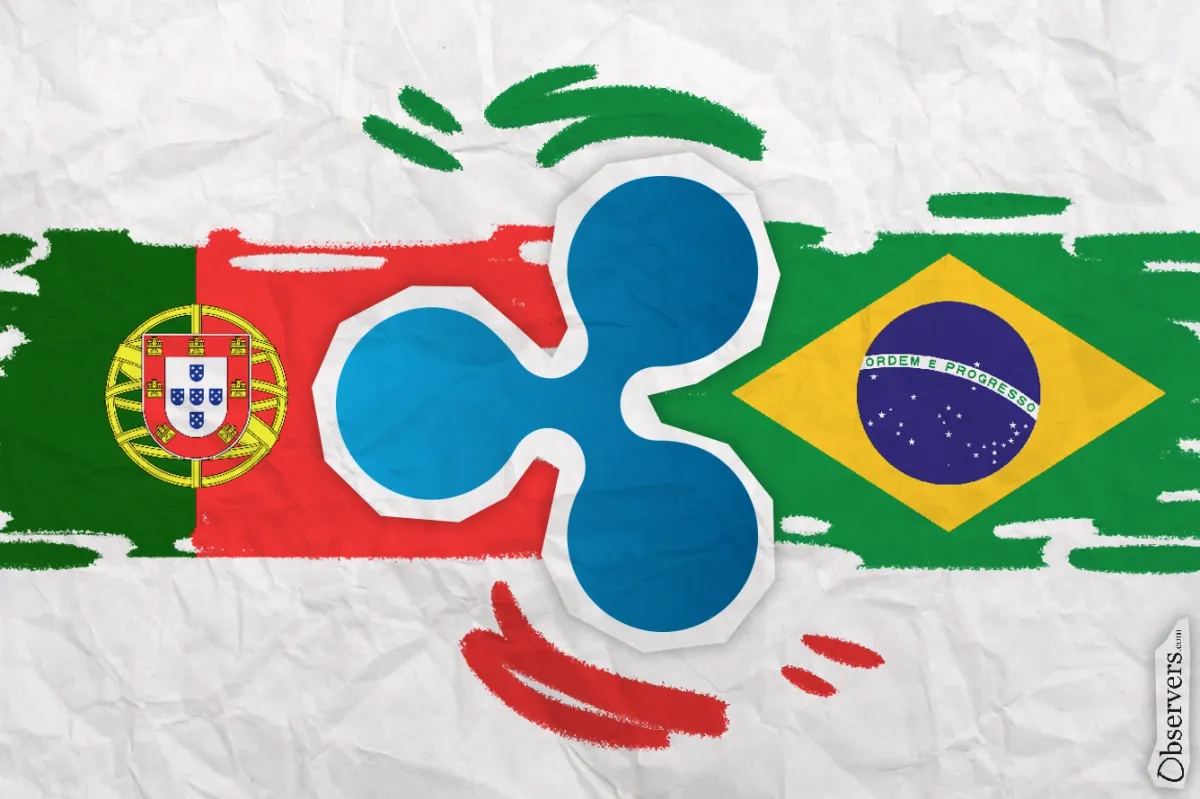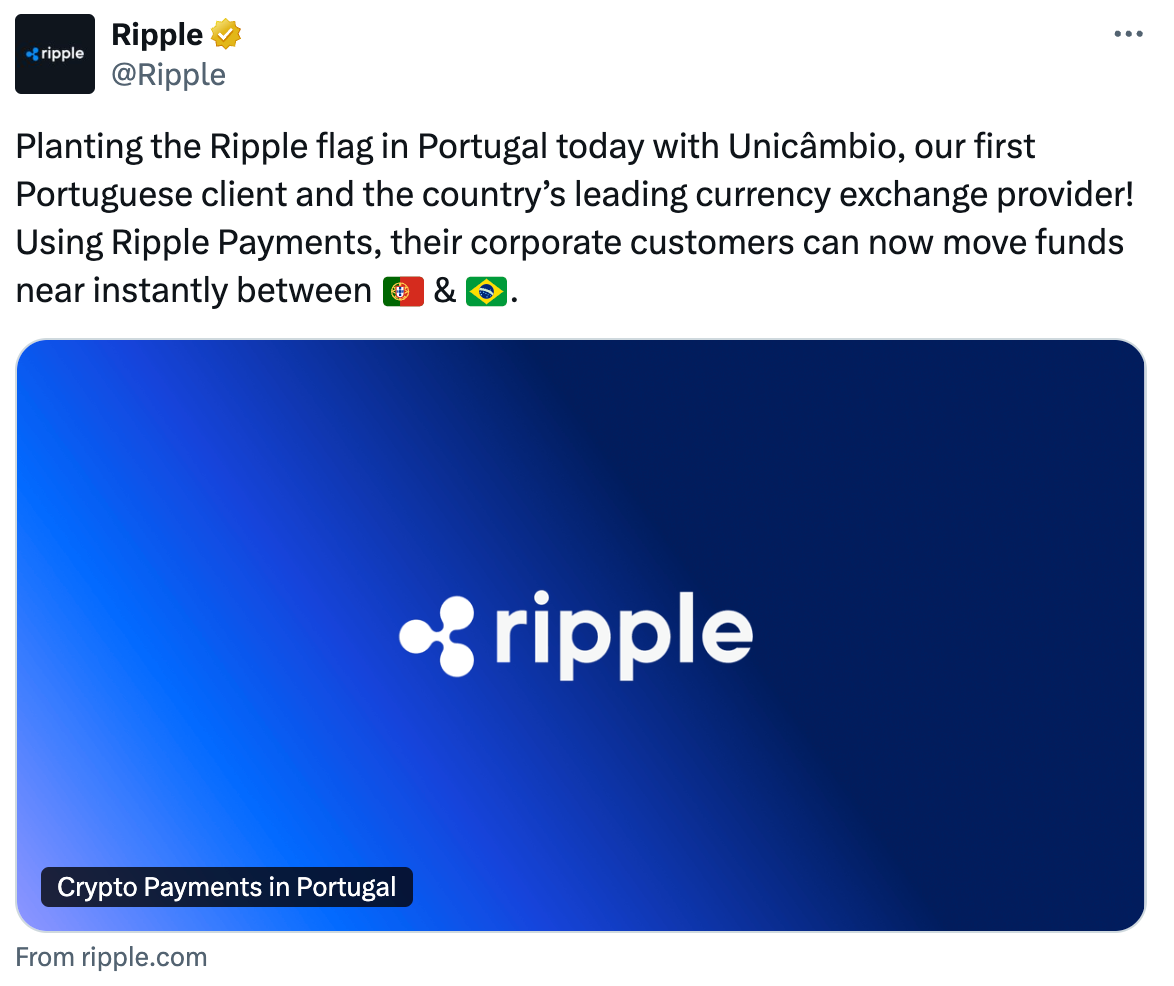
Ripple has partnered with Portuguese currency exchange provider Unicâmbio to enable instant cross-border payments between Portugal and Brazil using its XRP Ledger.
The collaboration allows Unicâmbio’s corporate customers to move funds and settle payments in minutes, leveraging Ripple Payments for faster, cost-effective transactions. In the press release, Cassie Craddock, Ripple’s Managing Director for the UK and Europe, said, “Portugal has developed a thriving crypto ecosystem, so we are delighted to open up our payments solution to partners there. By connecting our payment networks in Portugal and Brazil, we are facilitating faster, more cost-effective cross-border payments while strengthening the economic bridge between these two major markets.”

Ripple Payments (Formerly RippleNet)
Since the early days of Ripple project, RippleNet was envisioned as a real-time gross settlement (RTGS) network, offering instant cross-border transactions using decentralized ledger. Unlike Bitcoin, Ripple focused on institutional adoption, targeting banks and financial institutions. Ripple also pushed for regulatory compliance of its operations, especially in jurisdictions like the EU, Middle East, and Asia.
In December 2020, the U.S. Securities and Exchanges Commission (SEC) sued Ripple, alleging that XRP was an unregistered security. Many U.S. financial partners distanced themselves from Ripple, but adoption grew in regions like Asia, Latin America, and the Middle East.
In 2023, partial victories against SEC allowed Ripple to regain U.S. market traction. RippleNet was officially rebranded as Ripple Payments, signaling a more streamlined approach to financial services. The company expanded into central bank digital currencies (CBDCs), helping countries explore blockchain-based monetary systems.
Most recently, Ripple introduced its RLUSD stablecoin, which is believed to become the primary method for Ripple cross-border payments.
On-Demand-Liquidity For Payments With XRP Ledger
Ripple Payments offers two services: Ripple Payments Direct and Ripple Payments ODL (On-Demand-Liquidity). Ripple Payments Direct is based on traditional banking network and the Ripple Payments ODL leverages XRP ledger for transactions between banks. According to Ripple, the latter allows banks to free up liquidity locked in the banking accounts required to maintain direct transfers.
Although public data is not available, we estimate that only a small portion of the reported 35 million lifetime Ripple Payment transactions have moved XRP.
Despite the announcement of the partnership with Unicâmbio, Ripple’s XRP token has remained flat, trading at around $2.4 since last week, well below its one-year high of $3.39.

